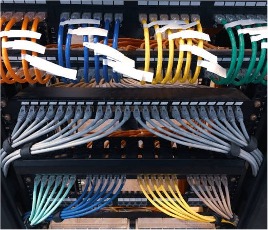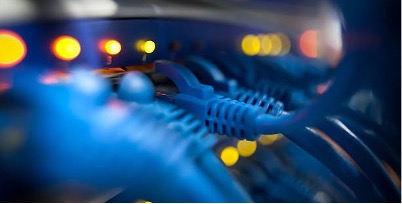Network Cabling installed to industry standards.
Your network cabling is the backbone of the technology that runs everything in your business. When installed properly, it can dependably serve you for many years.
Approximately 70% of network failures are caused by poor quality cable, connectors, and installation.

As technology continually advances, many technologies like phone systems, surveillance systems, security systems, and access control systems are now communicating over digital computer networks instead of older analog wiring. Even devices such as thermostats, doorbells, and lighting are communicating over these networks, making the foundation of your network that much more important.
Many existing networks were developed over time in a piece-meal fashion as there were few actual standards in the earlier days of networking. Today, with so many devices becoming dependent upon networking, a properly designed and installed network can be the difference between dependability and daily uncertainty and frustration.
We are experts in the world of IT, from the cables to the cloud, we have the knowledge and experience to provide you with solutions that will serve your business well. From setting up a simple data network to connecting resources for employees around the globe, we’ve got you covered.
Best Practices When Having Network Cabling Installed
- You'll always need more connections... have them installed before finishing walls and ceilings.
- Allow adequate space in your network room for air flow and climate control around your network equipment.
- Plan for proper conduits and pathways for the cabling.
- Have a dedicated electrical circuit for your network equipment.
- A network cabinet should be well organized, labeled, and documented.
What We Do
- Copper and Coaxial Cabling Systems
- Fiber Optic Cabling Systems
- Video Surveillance Systems
- Security and Access Control Systems
- Wireless Networks
- Overhead Paging Systems
- VOIP Phone Systems
- Cabinet and Rack Installation
- Equipment Room Design and Build
- Testing, Verification, and Certification
- Labeling
- Documentation






